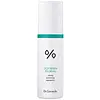What's inside
What's inside
 Key Ingredients
Key Ingredients

 Benefits
Benefits

 Concerns
Concerns

 Ingredients Side-by-side
Ingredients Side-by-side

Water
Skin ConditioningGlycerin
HumectantCaprylic/Capric Triglyceride
MaskingButyrospermum Parkii Butter
Skin Conditioning1,2-Hexanediol
Skin ConditioningPolyglyceryl-3 Methylglucose Distearate
EmulsifyingDicaprylyl Carbonate
EmollientGlyceryl Stearate Se
EmulsifyingBehenyl Alcohol
EmollientCentella Asiatica Extract
CleansingCarbomer
Emulsion StabilisingTromethamine
BufferingSodium Stearoyl Glutamate
CleansingEthylhexylglycerin
Skin ConditioningMicrocrystalline Cellulose
AbsorbentAdenosine
Skin ConditioningDisodium EDTA
Cellulose Gum
Emulsion StabilisingMadecassoside
AntioxidantBeta-Glucan
Skin ConditioningActinidia Arguta Fruit Extract
Skin ConditioningTocopherol
AntioxidantWater, Glycerin, Caprylic/Capric Triglyceride, Butyrospermum Parkii Butter, 1,2-Hexanediol, Polyglyceryl-3 Methylglucose Distearate, Dicaprylyl Carbonate, Glyceryl Stearate Se, Behenyl Alcohol, Centella Asiatica Extract, Carbomer, Tromethamine, Sodium Stearoyl Glutamate, Ethylhexylglycerin, Microcrystalline Cellulose, Adenosine, Disodium EDTA, Cellulose Gum, Madecassoside, Beta-Glucan, Actinidia Arguta Fruit Extract, Tocopherol
Water
Skin ConditioningButyrospermum Parkii Butter
Skin ConditioningGlycerin
HumectantShea Butter Ethyl Esters
EmollientAvena Sativa Kernel Oil
Skin ConditioningGlyceryl Stearate
EmollientPEG-100 Stearate
Tetrapeptide-30
Skin ConditioningCyanidium Caldarium Extract
Skin ConditioningHydrolyzed Jojoba Esters
Skin ConditioningPhenoxyethanol
PreservativeEthylhexylglycerin
Skin ConditioningBiosaccharide Gum-1
HumectantAmmonium Acryloyldimethyltaurate/Vp Copolymer
Tocopheryl Acetate
AntioxidantXanthan Gum
EmulsifyingCitric Acid
BufferingSodium Benzoate
MaskingPotassium Sorbate
PreservativeParfum
MaskingLinalool
PerfumingHexyl Cinnamal
PerfumingWater, Butyrospermum Parkii Butter, Glycerin, Shea Butter Ethyl Esters, Avena Sativa Kernel Oil, Glyceryl Stearate, PEG-100 Stearate, Tetrapeptide-30, Cyanidium Caldarium Extract, Hydrolyzed Jojoba Esters, Phenoxyethanol, Ethylhexylglycerin, Biosaccharide Gum-1, Ammonium Acryloyldimethyltaurate/Vp Copolymer, Tocopheryl Acetate, Xanthan Gum, Citric Acid, Sodium Benzoate, Potassium Sorbate, Parfum, Linalool, Hexyl Cinnamal
Ingredients Explained
These ingredients are found in both products.
Ingredients higher up in an ingredient list are typically present in a larger amount.
This ingredient is also known as shea butter. It is an effective skin hydrator and emollient.
Emollients help soothe and soften your skin. It does this by creating a protective film on your skin. This barrier helps trap moisture and keeps your skin hydrated. Emollients may be effective at treating dry or itchy skin.
Shea butter is rich in antioxidants. Antioxidants help fight free-radicals, or molecules that may harm the body. It is also full of fatty acids including stearic acid and linoleic acid. These acids help replenish the skin and keep skin moisturized.
While Shea Butter has an SPF rating of about 3-4, it is not a sunscreen replacement.
Shea butter may not be fungal acne safe. We recommend speaking with a professional if you have any concerns.
Learn more about Butyrospermum Parkii ButterEthylhexylglycerin (we can't pronounce this either) is commonly used as a preservative and skin softener. It is derived from glyceryl.
You might see Ethylhexylglycerin often paired with other preservatives such as phenoxyethanol. Ethylhexylglycerin has been found to increase the effectiveness of these other preservatives.
Glycerin is already naturally found in your skin. It helps moisturize and protect your skin.
A study from 2016 found glycerin to be more effective as a humectant than AHAs and hyaluronic acid.
As a humectant, it helps the skin stay hydrated by pulling moisture to your skin. The low molecular weight of glycerin allows it to pull moisture into the deeper layers of your skin.
Hydrated skin improves your skin barrier; Your skin barrier helps protect against irritants and bacteria.
Glycerin has also been found to have antimicrobial and antiviral properties. Due to these properties, glycerin is often used in wound and burn treatments.
In cosmetics, glycerin is usually derived from plants such as soybean or palm. However, it can also be sourced from animals, such as tallow or animal fat.
This ingredient is organic, colorless, odorless, and non-toxic.
Glycerin is the name for this ingredient in American English. British English uses Glycerol/Glycerine.
Learn more about GlycerinWater. It's the most common cosmetic ingredient of all. You'll usually see it at the top of ingredient lists, meaning that it makes up the largest part of the product.
So why is it so popular? Water most often acts as a solvent - this means that it helps dissolve other ingredients into the formulation.
You'll also recognize water as that liquid we all need to stay alive. If you see this, drink a glass of water. Stay hydrated!
Learn more about Water